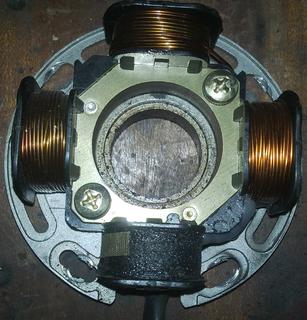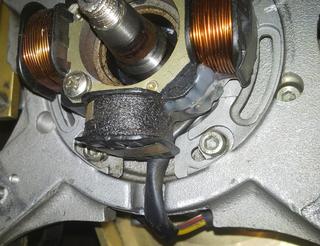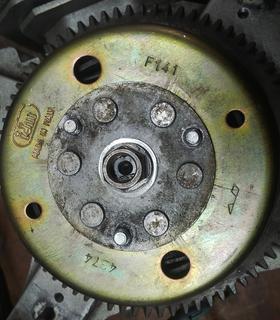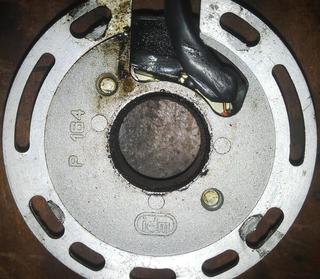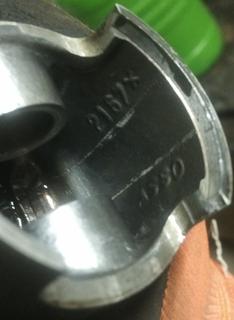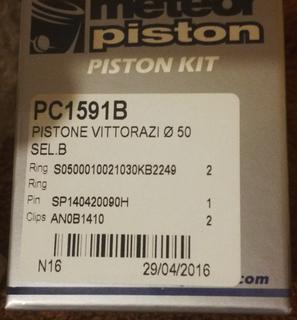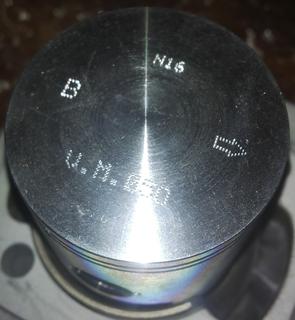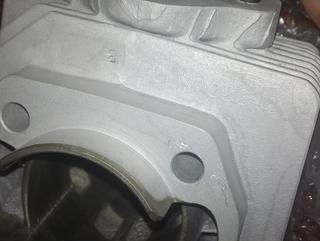My first PPG engine was the Vittorazi Easy 100 assembled with a frame from Fly Products. I bought it in used condition and was flying it more or less successfully for over three years before selling it in 2019. During that period, I naturally encountered some problems for which I tried to find solutions on the internet. However, the owners’ community for these engines is almost nonexistent. Available information was scarce and scattered, so I decided to gather everything I know and write it down in case someone in need might find it useful.
The so-called Fly 100 engines have several versions:
- Easy with belt transmission, the propeller rotates counterclockwise,
- Evo with gear transmission and centrifugal clutch, the propeller rotates clockwise,
- Evo 2 and Easy Plus, which appear to be updated versions of their respective predecessors.
Available documents
I gathered here all documents about these engines available on the Internet. I won’t repeat information contained in them, browse them first then read this post.
- Owner’s manual
- Easy 100 dimensions and mounting
- Easy 100 exploded view new and old
- Easy 100 parts list, to be used with the exploded drawing
- Evo 100 parts list
If you’re an owner of one of these motors and have some additional documents or insights, please don’t hesitate to email me. I would be happy to include them here!
Gaskets
Replacement gaskets can be cut from sheets of raw gasket material. I have measured the thickness of several gaskets, but not all. The names mentioned below correspond to the names in the parts list document.
| Part name | Thickness |
|---|---|
| cylinder gasket | 0.3 mm |
| carter gasket | 0.5 mm |
| carburettor gasket | 1 mm |
Bearings and seals
All of these are standard components and can be replaced with parts obtained from any mechanic’s shop. I am listing the components originally mounted by Vittorazi for reference.
- crankshaft bearing (code A003 on the parts list):
FAG 6204 C 2HRS C3 - crankshaft seal 32/20/7 (A004)
LYO 20383 TC 20 32 - piston rod bearing (A008) - needle roller bearing, 16.2 mm width, inner
diameter: 14 mm, outer diameter: 18 mm, no markings; replaced with
BARIKIT METAL 14X18X16 - belt transmission bearing (A118):
FAG 6004 C2 - small transmission bearing (A108):
SKF 608-2Z C3
Components
Magneto coils
There are no visible markings on the coil. I was told by the dealer that the very same coil is used in some Polini and Simonini paramotors. I also found that it was used in Tomos A-35 and Tomos A-55 mopeds. The coil has two windings: the one wound with thick wire is for the battery charger, and the one covered in black insulation tape is for driving the ignition module. In my case, the ignition winding was partially shorted, causing erratic ignitions. Healthy coils have the following resistances:
| Coil: | Resistance: |
|---|---|
| Ignition | 290 Ω |
| Charging | 0.8 Ω |
You may look for the coil and CDI modules with the following search queries: Iskra A-35, Iskra A-55, Tomos A-55.
Ignition module IDM 54 2523
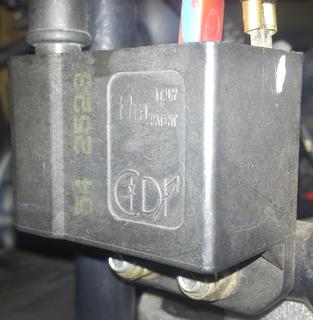
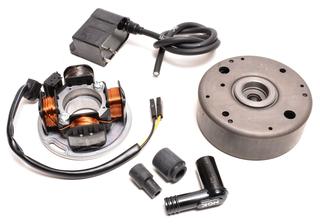
Apparently, the same CDI ignition system is used in Tomos A-55 scooters. You can find detailed information about the CDI ignition system used in Tomos here. The CDI module may be different, but the general idea is the same. You can probably use any other CDI module with a two-pin input.
Magneto rotor IDM F141
Magneto coil mount IDM P 164
Piston
The original piston has the following markings: ASSO 2167. I couldn’t find a replacement piston, so I bought a genuine replacement, including rings, pin, and clips, at the official dealer’s shop. This one was manufactured by Meteor. The label says:
PC1591B
PISTONE VITTORAZI 50
SEL.B
Ring S0500010021030KB2249
Pin SP140420090H
Clips AN0B1410
Piston pin
Dimensions: length 41.5 mm, diameter 14 mm.
Piston ring 50 x 1 mm, chromed
No further information.
Cylinder
The original cylinder has no markings. I heard some rumors that it’s possible to adapt a cylinder from specific Peugeot scooter, but I couldn’t find a matching cylinder at Peugeot’s dealer. The replacement cylinder has CLN: 000481 written on it.

